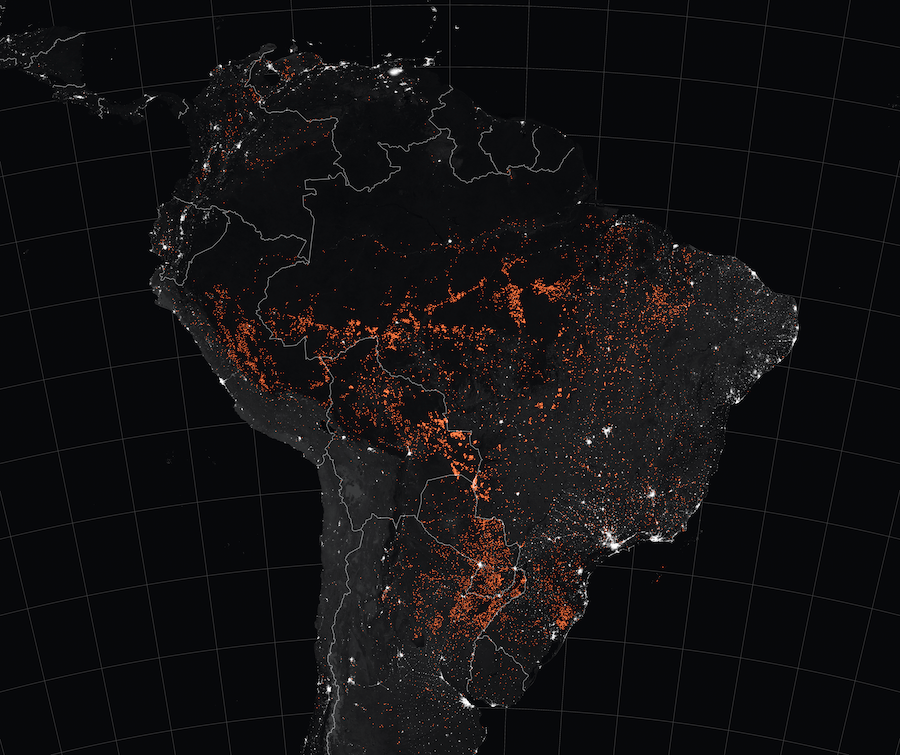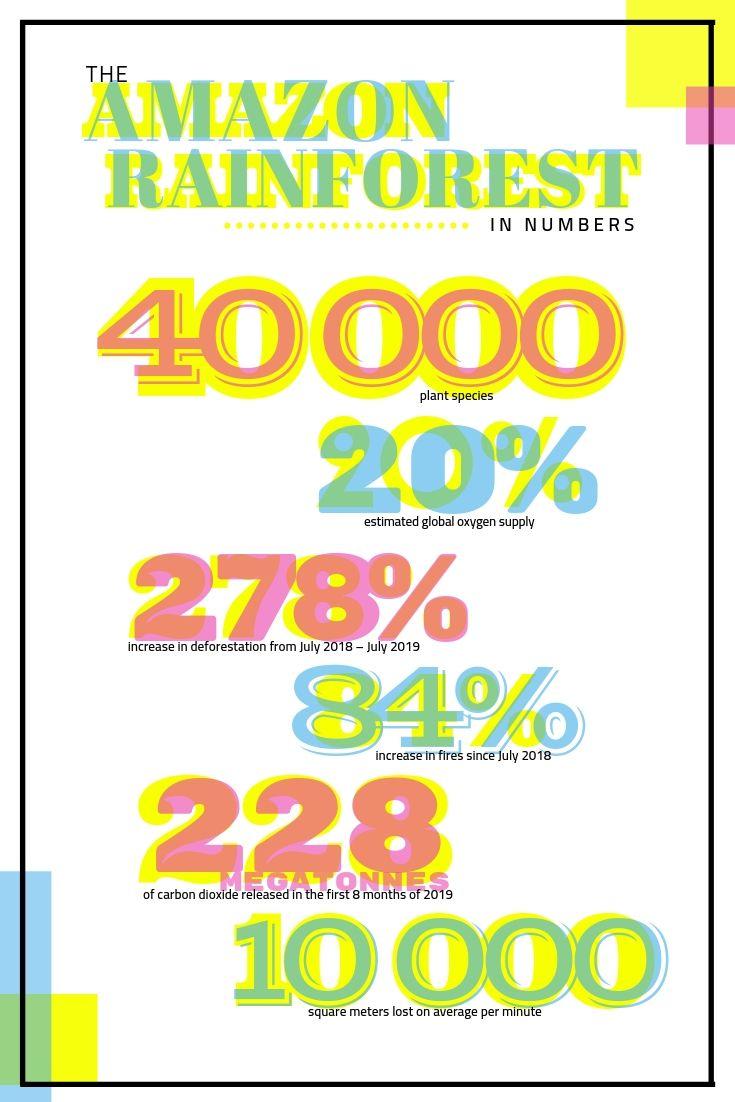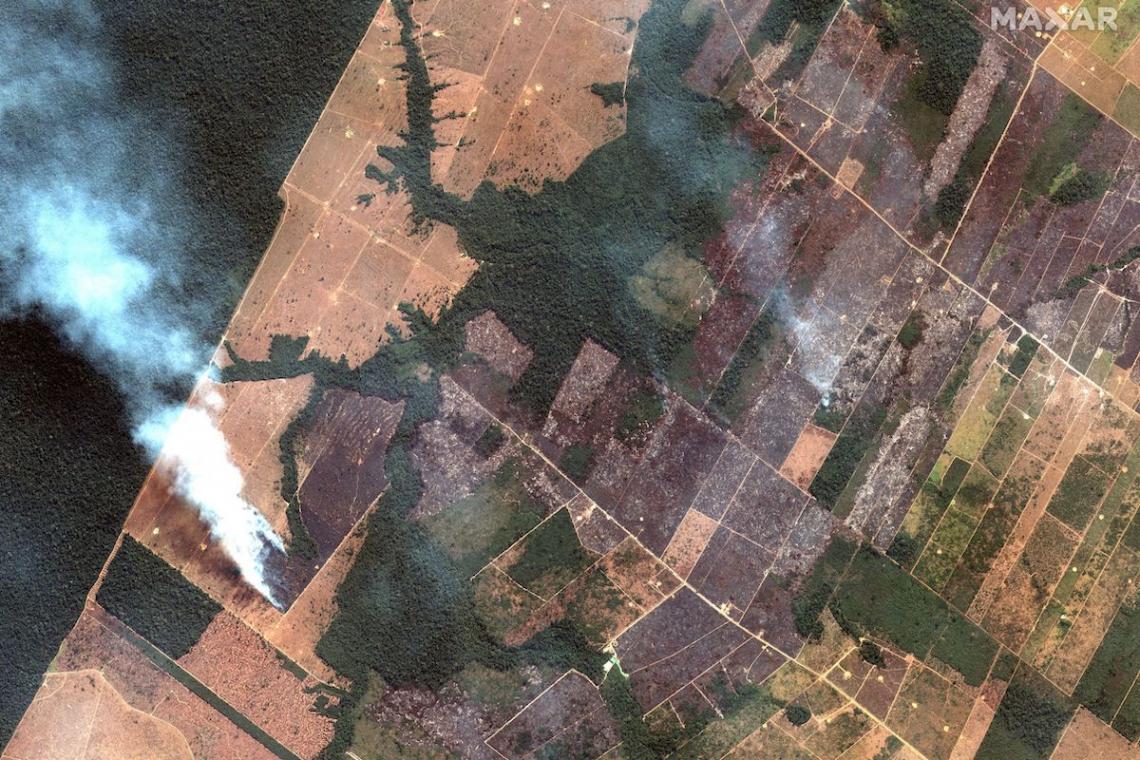‘The Amazon Rainforest is on fire!’ A symbolic interpretation of this expression indicates that the forest is doing well and being cared for by us. Indeed, neither the forest nor we are fortunate enough to claim this. So, what is happening? Why should we care? What can (should) we do about it? Here is what you need to know.
Putting it into perspective
Development in the Amazon Rainforest
Several reports indicate a recent increase in fires in the Amazonian region as a result of human intervention. Clearing of the forest began as early as the 1970s, and have grown rapidly since the 1990s. So what is the driving force behind these drastic changes? Simplified: to accommodate farming developments. Large and medium‐sized ranches account for about 70% of clearing activity, and the profits from beef cattle support the degradation of this area.
South America Burning - 15 - 22 Aug 2019 - Source: NASA

Illegal deforestation and deliberate fires that occur in the area have detrimental outcomes on the forest. This includes a loss of biodiversity, displaced wildlife, reduced water cycling, declined rainfall, and contributions to climate change.
The Amazon in numbers
- 40 000 plant species
- 3 000 freshwater fish species
- 370+ types of reptiles
- 30 million human inhabitants
- 350 indigenous and ethnic groups
- ±20% of our oxygen supply
- 2/3 the size of the U.S.
- 40 years of conservation support from the WWF
- 2005 & 2010 worst droughts of the last 100 years
- 278% increase in deforestation from July 2018 – July 2019
- 84% increase in fires since July 2018
- 228 megatonnes of carbon dioxide released in the first 8 months of 2019
- 75 000 forest fires recorded in Brazil in the first 8 months of 2019
- 26 000 forest fires recorded in Venezuela in the first 8 months of 2019
- 114% increase in forest fires (17 200) recorded in Bolivia in the first 8 months of 2019
- 10 000m2 lost on average per minute
- 20-40 years for the forest to regenerate
What the Amazon forest means to us
The Amazon spans over eight rapidly developing countries (including French Guiana, an overseas territory of France) with the majority of the forest in Brazilian territory. This landscape is home to about 10% of known species on Earth, 1.4 billion acres of dense forests (half of the planet's remaining tropical forests), and habits about 40% of South America’s land.
The Amazon is often referred to as our “planet’s lungs”. Meaning that when the Amazon stops breathing, so do we. The WWF recognises a clear link between the health of the Amazon and the health of the planet. As the ocean helps stabilise our carbon emission (which is pivotal to controlling climate change), the forest does the same. Therefore, deforestation may release significant amounts of this carbon, which could have catastrophic consequences around the world. Remember, excessive carbon is not good for our lungs.
Contributions to sustainable solutions
From a political point of view, French Pres. Emmanuel Macron has encouraged fellow G7 leaders to help abolish this international crisis. The situation is set to be discussed at the current G7 summit. The Amazon Beef and Soy Moratorium, created by private global agreements, encourages efforts to end Amazon deforestation and support sustainable farmers and other suppliers.
The WWF have been avid conservationists of the forest for over 40 years and will always need support to further their efforts. The WWF offers ways to help the Amazon Rainforest, which includes donating to their emergency campaign, eating more sustainably, being a voice for the overlooked, and informing others on the threats this environment is facing. Ultimately the conservation of this forest is no longer a novelty, but a global issue.
Further reading about the effect of the forest fire on wildlife.
Main Image Source: Satelite Image 15 Aug 2019 - Maxar Technologies


Shop for a cause
Shop on amazon.com | amazon.co.uk


